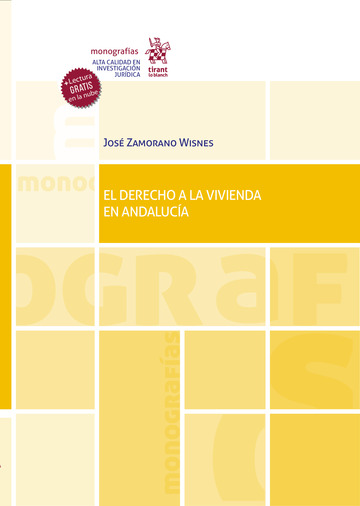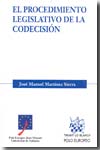The European Council against EU Law
- ISBN: 9788411136693
- Editorial: Editorial Tirant lo Blanch
- Fecha de la edición: 2022
- Lugar de la edición: Valencia. España
- Colección: Monografías
- Encuadernación: Rústica
- Medidas: 23 cm
- Nº Pág.: 460
- Idiomas: Inglés

The European Union (EU) will not survive without a vibrant democracy and a strong rule of law, and European leaders have the responsibility of treasuring these vital pillars. The author of this book, however, claims that EU leaders, far from fulfilling such an obligation, represent a fundamental risk to EU Law and EU democratic decision-making.
This book is the first comprehensive study of EU leaders? crucial decisions that have violated EU
Law at its highest level. From the German reunification to Brexit, all major decisions are scrutinized to build the irrefutable case that the actions of the European Council and the meetings of EU leaders during the most decisive European crises pose a risk for EU democracy.
The author, José Manuel Martínez Sierra, shaped this ambitious project during his decade at Harvard University where he was the only Jean Monnet ad personam Chair in EU Law and Government teaching and researching on these topics. This book is dedicated to his Harvard students that suffered through the Trump administration and its harms to democracy.
ABBREVIATIONS AND ACRONYMS 17
I. INTRODUCTION 21
II. GENESIS AND FIRST STEPS 25
II.1. On the need for a European Council: reasons for creating a new institution. 25
II.1.1. International level. 27
II.1.2. European Community level. 30
II.1.3. National level. 36
II.1.4. The Conception of the European Council 42
II.2. The period preceding the Single European Act. 44
II.3. The European Council within Primary Law. 47
III. GERMAN UNIFICATION VERSUS ENLARGEMENT. 53
III.1. The GDR and the European Community Integration. 53
III.2. Grundgesetz as a starting point. 54
III.2.1 The position of the European Council. 57
III.3. International Law as a starting point: a prima facie reading. 57
III.4. Rebus sic stantibus: a long and winding reading. 61
III.4.1. A reading against the application of the rebus sic stantibus clause. 61
III.4.2. A reading in favor of the rebus sic stantibus clause. 64
III.4.3. The rebus sic stantibus clause. 69
III.5. European Community Law after the Single European Act. 71
III.5.1. Article 237. 72
III.5.2. Articles 137, 138, 148, 157, in fine. 77
III.5.3. Article 273. 81
III.5.4. Articles 157 and 189: The Commission’s independence and right of initiative. 82
III.5.5. Article 164. 84
III.6. Article 2 of the Single European Act and the Declaration of the European Council. 86
IV. THE EUROPEAN COUNCIL IN THE CONTEXT OF THE TREATY OF THE EUROPEAN UNION. 89
IV.1. The traditional European Council. 89
IV.2. The Legislative Council 91
IV.2.1. The new Council. 92
IV.2.2. The new rule. 96
V. THE EUROPEAN COUNCIL IN THE 1992 EDINBURGH AND 1993 BRUSSELS SUMMITS 99
V.1. The “decisions” made. 99
V.2. The nature of the institution. 107
V.2.1. The decisions adopted by the European Council 107
V.2.2. The justifying position. 108
V.2.3. The critical position. 109
V.2.4. The soft law thesis. 111
V.2.4.1. Soft law in International Public Law. 111
V.2.4.2. Soft law in Community Law. 114
V.2.4.3. The weakness in the classification of European Community soft law. 117
VI. THE EUROPEAN COUNCIL AFTER THE TREATY OF LISBON 123
VI.1 Composition 123
VI.1.1. The Heads of State or Government and the President of the Commission 124
VI.1.2. The President of the European Council 127
VI.2. Duties 134
VI.2.1. Duties as the governing body of the Union 135
VI.2.1.1. General duties: providing political directions and impetus 135
VI.2.1.2. Roles in economic and monetary policy and employment policy 138
VI.2.1.3. Foreign Action and CFSP functions 145
VI.2.1.4. Functions within the Area of Freedom, Security and Justice 151
VI.2.2 Constitutional functions 152
VI.2.2.1 Decision determining the composition of the European Parliament 153
VI.2.2.2. List of Council formations and rotating presidency rules 156
VI.2.2.3. Proposal of the candidate for the post of President of the Commission 160
VI.2.2.4. Establishment of the system of equal rotation for the selection and appointment of the members of the Commission 164
VI.2.2.5. Participation in the reform of the Treaties. 169
VI.2.2.5.1. Participation in the ordinary review procedure 169
VI.2.2.5.2. Participation in simplified review procedures 174
VI.2.2.5.2.1. A decision to authorize the shift from unanimity to qualified majority voting, and from a special legislative procedure to the ordinary legislative procedure 177
VI.2.2.5.2.2. Adoption of simplified draft revisions of the Union's internal policies and actions 179
VI.2.2.5.2.3. Other bridging clauses 181
VI.2.2.5.3. Other provisions enabling the European Council to amend the provisions of the Treaties 182
VI.2.2.6. Role upon the accession of a State to or the exit of a Member State from the Union 184
VI.2.2.7. Role in the appointment of certain senior positions 186
VI.2.3. Functions as arbitrator or dispute resolution institution 187
VI.2.4. Other Functions 191
VI.3. Functioning 194
VI.3.1. Decision-making: rules and types of acts the European Council may adopt 194
VI.3.2. Meetings: preparation, development, conclusions, and follow-up 202
VI.3.2.1. Meetings 202
VI.3.2.2. Preparation for meetings 204
VI.3.2.3. Carrying out work 211
VI.3.2.4. Presidency Conclusions and follow-up 215
VII. THE EUROPEAN COUNCIL DURING THE ECONOMIC CRISIS 219
VII.1. The Emergence of a New EU Economic Governance 219
VII.2. The European Union’s Economic Constitution 222
VII.2.1. The two coordination branches: Multilateral Surveillance and the Excessive Deficit Procedure 225
VII.2.1.1. Multilateral surveillance: preventing excessive deficit 226
VII.2.1.2. Excessive Deficit Procedure: correcting and sanctioning 227
VII.2.1.3. Economic coordination before and after the crisis 229
VII.3. The development of economic provisions following the financial and economic crisis 233
VII.3.1.1. Measures for a stronger coordination and surveillance of Member States’ economic, fiscal, and budgetary policies 234
VII.3.1.2 Measures adopted to safeguard the financial stability of the euro zone and reform the financial sector 238
VII.3.1.3 Multilateral surveillance 240
VII.3.1.4. Excessive Deficit Procedure 242
VII.3.1.5. The European Semester: the new cycle for economic and budgetary policy coordination 243
VII.4. Two hypotheses about the actions of the European Council. 247
VII.4.1. First Hypothesis: failure to comply with the existing decision-making method 247
VII.4.1.1. Control of the legislative initiative by the European Council 248
VII.4.1.2. The reform of Article 136 TFEU and the entering into force of the Treaty Establishing the European Stability Mechanism 251
VII.4.1.3. The simplified revision procedure in the case of Article 136 TFEU 256
VII.4.1.4. The principle of unanimity for adopting the ESM Treaty and the TSCG 259
VII.4.1.5 Opaque decision-making by the European Council 262
VII.4.2 Second hypothesis: the economic governance measures adopted are in breach of the law 263
VII.4.2.1 The Treaty on Stability, Coordination and Governance in the Economic and Monetary Union and EU Law 263
VII.4.2.2 The ESM and the “no bail-out” clause 264
VII.5. Overstepping competences and breaking EU Law 267
VIII. THE EUROPEAN COUNCIL DURING THE MIGRATION CRISIS 275
VIII.1. The “EU-Turkey Statement”: A European Legal System in Jeopardy 275
VIII.2. The European Council finally before EU Court of Justice 276
VIII.3. Was the European Council the one the blame? 280
VIII.4. The European Council actions were legally binding 288
VIII.5. The European Council without effective control 299
IX. THE EUROPEAN COUNCIL DURING BREXIT 303
IX.1. A Sui Generis Crisis 303
IX.2 Understanding Article 50: What it says and What it does not say 304
IX.2.1 Understanding the CJEU interpretation of article 50: The importance of what is left unsaid 324
IX.3. Back to the Future: The New Settlement for the UK within the EU 331
IX.3.1 Before Article 50: The made-up procedure and its justification 333
IX.3.2. The actual content of the New Settlement for the UK 343
IX.4. Brexit: What Remains for the Council after the UK has left the European Union 353
X. THE IMPACT OF THE EUROPEAN COUNCIL ON THE INSTITUTIONAL SYSTEM OF THE UNION 363
X.1. Impact on the Council 364
X.2. Impact on the Commission 367
X.3. Impact on the European Parliament 369
XI. ABOUT CONTROL FROM EU LEADERS 375
XI.1. Political control mechanisms 376
XI.2. Judicial control mechanisms 386
XI.2.1 The formal situation after the reform of the Lisbon Treaty: Primary Law 394
XI.2.2 The actual situation after the reform of the Lisbon Treaty: CJEU Case Law 401
XII. CONCLUSIONS AND SOLUTIONS 405
XIII. BIBLIOGRAPHY 433









